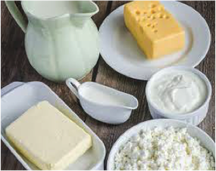 What is Osteoporosis? Osteoporosis is a condition in which the bones become fragile and break more easily. This is because calcium and bone tissue, the major building blocks of bone, are being lost. Bones are denser on the outside and have an open honeycomb structure on the inside. When calcium and bone tissue are lost, the outer shell becomes thin and the ‘honeycomb’ develops larger holes. This weakens the bone, which is then more likely to break. The process of bone loss begins from about the age of 35 onwards as part of the normal ageing process. Osteoporosis is very common and is a major cause of skeletal problems worldwide. About one third of women in Australia and New Zealand will suffer fractures by the time they reach their seventies. Osteoporosis is also found in men, but is much less common. How is Osteoporosis caused? There are different stages of bone changes throughout life. The first stage occurs up to the age of 35 when bone reaches its maximum strength. From 35 years of age onwards, there is a slow loss of bone strength in both sexes. In women the fall in oestrogen levels at menopause leads to loss of bone calcium and structure over several years. In younger women, oestrogen is important in preventing calcium being lost from the bones. How do you know if you have Osteoporosis? You often show no sign of osteoporosis until you have a fall and break a bone. Breaks are more common in the bones of the spine, the hip and the wrist. These breaks can occur even after a minor fall. In the spine osteoporotic fractures lead loss of height and acute episodes of back pain. These vertebral crush fractures give a forward tilt or bend to the spine producing the ‘Dowager’s hump’ appearance and preventing the maintenance of posture. Who is at risk of Osteoporosis? There are a number of factors that make you more likely to develop osteoporosis. Some of these factors you may be able to alter while others you cannot. You are more likely to develop osteoporosis if you:
 You are also at higher risk of osteoporosis if you:
However, these risk factors may not be a completely reliable guide to your individual risk of osteoporosis. Your bone density (but not bone structure) can be measured if you or your doctor is concerned about your risk.  What can you do to reduce the risk of Osteoporosis? The best way to prevent osteoporosis is to reduce your exposure to the risk factors mentioned. These include maintaining an adequate calcium intake, avoiding high intakes of alcohol and caffeine, and stopping smoking. Dairy foods, such as cheese, milk and yoghurt, are the best sources of calcium and you should aim for 3 serves daily. Each of the following is roughly equivalent to 1 serve: 1 (250 ml) glass of milk; a 200 g tub of yoghurt: or a 35 g piece of cheese. If you are experiencing or have just experienced the menopause, your doctor may decide to give you hormone replacement therapy. This replaces the oestrogen that your body no longer produces and helps prevent the loss of calcium from the bones. Weight bearing exercise such as walking, jogging, tennis, golf, dancing and bowls helps to maintain bone strength. What can be done to treat Osteoporosis? If you are in pain your doctor may prescribe pain relievers and muscle relaxants. Bed rest may be useful initially and a back brace may also be of help. Gentle exercise, such as walking, can help to improve bone strength. You may also be given medicine, which can help prevent bones losing their strength. These medicines include calcitriol, the active form of Vitamin D, anabolic steroids, hormone replacement therapists and calcium supplements. Please refer to your doctor if you have any further questions. Reference: Adis International, Roche If you need help to get mobile, exercise or you need dietary advice our friendly physiotherapists and dietitians can help just contact us.
Ph: (03) 377 5280 Email: [email protected] Comments are closed.
|
AuthorShonagh O'Hagan Archives
July 2024
|

 RSS Feed
RSS Feed